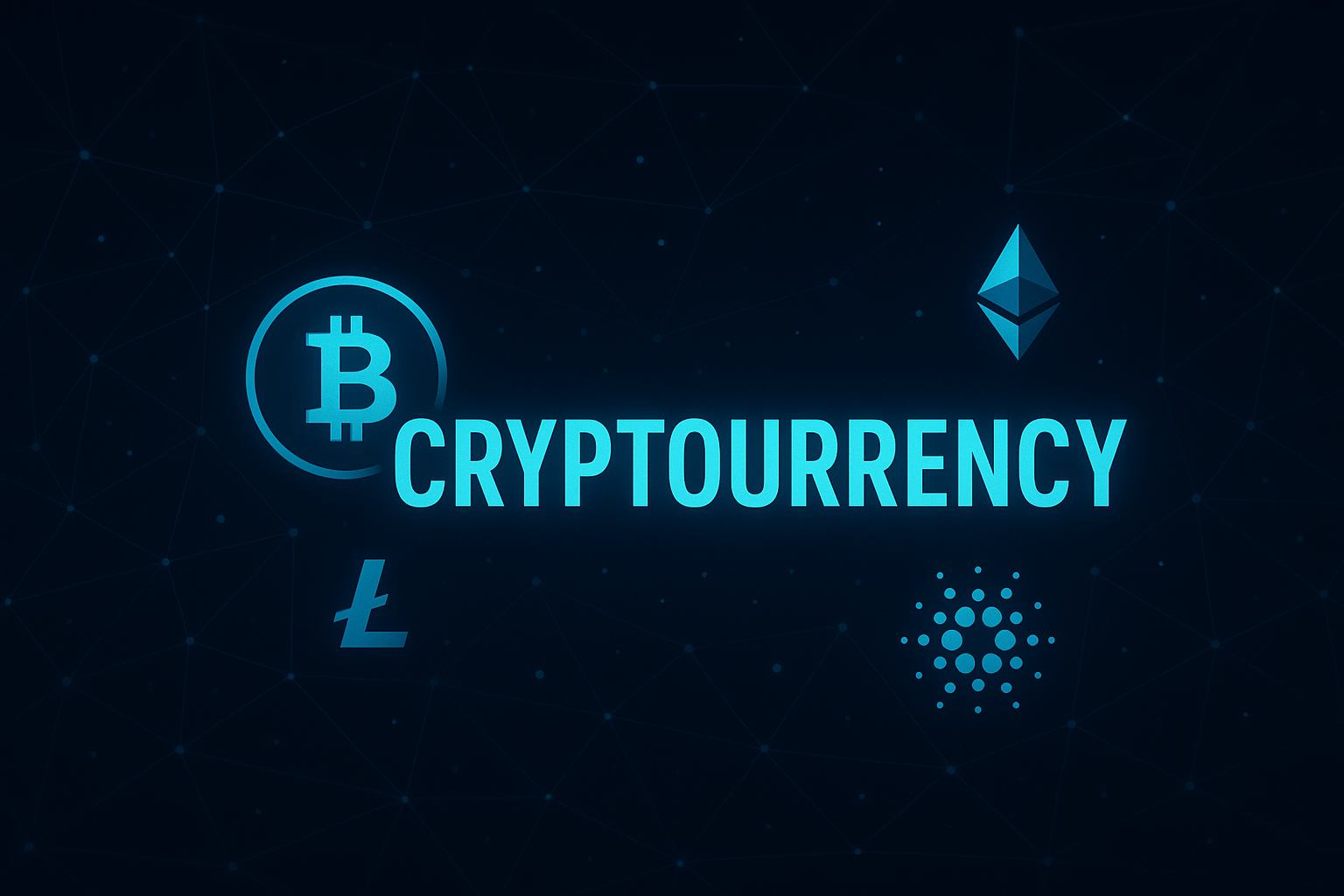Cryptocurrency for beginner
How to Store Cryptocurrency
How to Store Cryptocurrency
Storing cryptocurrency securely is one of the most important steps for any crypto holder.
Cryptocurrencies like Bitcoin, Ethereum, and Solana are stored in digital wallets, which can be either hot wallets connected to the internet or cold wallets .
Hot wallets, such as mobile apps, web wallets, and desktop wallets, are convenient for frequent transactions but require strong security practices like two-factor authentication and secure passwords.
Cold wallets, including hardware wallets and paper wallets, keep your private keys offline, providing maximum protection against hackers and malware.
For large amounts or long-term storage, cold wallets are strongly recommended.
No matter which type of wallet you use, safeguarding your private keys and seed phrases is critical — losing them can mean losing access to your funds permanently.
Additionally, it’s wise to back up your wallets, keep backups in multiple secure locations, and stay alert against phishing attacks or scams.
By choosing the right storage method and practicing good security habits, you can confidently protect your crypto investments and participate safely in the future of finance.
This is complete, professional, and works for websites, crypto education pages, wallet product pages, and more.
What can you buy with cryptocurrency?
Cryptocurrency is becoming a real-world payment method for a growing number of products and services.
Today, you can use Bitcoin, Ethereum, and other major cryptocurrencies to buy everything from luxury goods like watches, jewelry, and cars to daily necessities like groceries, electronics, and clothing.
Many online retailers, tech companies, and even travel agencies accept crypto for booking flights, hotels, and vacation packages.
Charities and non-profit organizations also accept cryptocurrency donations, making it possible to give back in a modern way.
Beyond physical goods, you can use crypto to invest in digital assets like NFTs, virtual land in the metaverse, gaming upgrades, and subscription services like VPNs and streaming platforms.
With the rise of crypto debit cards, it’s even easier to spend your crypto anywhere traditional cards like Visa or Mastercard are accepted — seamlessly converting digital assets into real-world purchases.
As adoption grows, the possibilities for what you can buy with cryptocurrency continue to expand, offering more freedom, speed, and innovation in everyday spending.
Cryptocurrency fraud and cryptocurrency scams
Cryptocurrency Scams
Cryptocurrency scams are broader and can include fraud but also cover manipulative tactics that may or may not be technically illegal (though they are unethical). Common types:
Romance Scams: Scammers build online relationships and then convince victims to invest in fake crypto schemes.
Giveaway Scams: Claiming that if someone sends crypto to an address, they will receive more in return (often seen impersonating celebrities or companies).
Rug Pulls: Developers create a legitimate-looking project or token, raise a lot of money, and then “pull the rug” — disappearing with all the funds.
Fake Technical Support: Scammers pretend to be customer service agents and convince users to give them control over wallets or funds.
Impersonation Scams: Pretending to be famous crypto influencers, companies, or government officials to solicit money or credentials.
Key Differences
Aspect Cryptocurrency Fraud Cryptocurrency Scam
Legality Strictly illegal Can be illegal, but not always clearly criminal
Methods Sophisticated deception, often targeting systemic vulnerabilities Manipulation, social engineering, fake promises
Examples Hacking an exchange, fake ICOs Romance scams, fake giveaways
How to Protect Yourself
Always double-check URLs and emails.
Use reputable exchanges and wallets.
Enable two-factor authentication.
Be skeptical of “guaranteed” returns.
Research thoroughly before investing.
Never share your private keys or seed phrases.

Why Cryptocurrency Can Be Safe?
Blockchain technology (the foundation of cryptocurrencies) is very secure — it’s decentralized and uses strong cryptographic algorithms.
Most major cryptocurrencies like Bitcoin and Ethereum have never been hacked at the blockchain level.
Transparency: All transactions are recorded publicly and can’t be changed.
Why Cryptocurrency Can Be Risky
User responsibility: If you lose your private keys or someone steals them, there’s usually no way to recover your funds.
Scams and frauds: Scammers often trick people into sending crypto or giving away their login info.
Exchange hacks: Some cryptocurrency exchanges have been hacked, leading to losses.
Volatility: Crypto prices can swing wildly, meaning you can lose a lot of money quickly.
Regulation uncertainty: Crypto rules are changing around the world, which can create risks for investors.
Technical errors: Sending crypto to the wrong address, choosing faulty smart contracts, etc., can result in lost money.
Benefits of Cryptocurrency
Fast and Low-Cost Transactions
Traditional international money transfers can take days and involve high fees. In contrast, cryptocurrencies allow people to send and receive money quickly, often within minutes, and at a lower cost. Whether transferring funds across the street or across the globe, blockchain technology makes transactions faster and more efficient, reducing the need for middlemen like banks and payment processors.
Financial Inclusion
Billions of people worldwide do not have access to traditional banking services. Cryptocurrency provides a solution: anyone with an internet connection can create a wallet and participate in the financial system. This opens up economic opportunities for people in remote, underserved, or politically unstable regions.
Ownership and Control Over Assets
In the traditional banking system, your access to funds can be restricted or even frozen. In cryptocurrency, you are the true owner of your assets as long as you hold the private keys to your wallet. This full control empowers users to manage, invest, and transfer their wealth without needing approval from intermediaries.
Transparency and Security
Cryptocurrency transactions are recorded on public blockchains, creating a transparent and unchangeable record of all activities. This transparency reduces the risk of fraud. Furthermore, strong cryptographic techniques secure the network, making hacking extremely difficult at the blockchain level.
Potential for High Returns
Although cryptocurrencies are volatile, they have offered significant financial returns to early and smart investors. Bitcoin, for example, has increased in value by thousands of percent since its launch, outperforming many traditional investments like stocks or real estate over certain periods.
Innovation and New Technologies
Cryptocurrencies have led to the creation of innovative technologies like smart contracts, decentralized finance (DeFi), non-fungible tokens (NFTs), and decentralized applications (DApps). These innovations are creating new ways for people to invest, trade, borrow, lend, and build digital economies without relying on traditional systems.
Privacy and Anonymity
Some cryptocurrencies offer enhanced privacy features, allowing users to transact without revealing their identities. While Bitcoin transactions are transparent but pseudonymous, other coins like Monero or Zcash are specifically designed to offer strong privacy protections.
Top Cryptocurrency list










Pi Network
Pi Network is a digital currency project that aims to make cryptocurrency mining accessible to everyday users through mobile devices. Launched in 2019 by a team of Stanford graduates, Pi Network allows users to mine its native token, Pi, using a smartphone app without draining battery power or requiring expensive hardware. Unlike traditional cryptocurrencies like Bitcoin, which rely on energy-intensive proof-of-work mechanisms, Pi Network uses a uniqueStellar Consensus Protocol (SCP)-based algorithm altenative to verify transactions and secure the network. The project envisions building a user-friendly and inclusive digital economy, where millions of people worldwide can participate in crypto transactions, services, and decentralized applications (dApps) directly from their phones. While currently in its enclosed Mainnet phase, where Pi cannot yet be traded on exchanges, the network plans to transition to an open Mainnet in the near future, unlocking full functionality and market integration.
Polygon (MATIC)
Ploygun is a leading Layer 2 scaling solution designed to enhance the speed, scalability, and affordability of transactions on the Ethereum blockchain. Launched in 2017 as Matice Network, it later rebranded to Polygon while expanding its vision to become a comprehensive multi-chain ecosystem compatible with Ethereum. Polygon works by processing transactions off-chain while anchoring final records to the Ethereum mainnet, significantly reducing congestion and gas fees. The network supports a growing ecosystem of decentralized applications (dApps), decentralized finance (DeFi) platforms, NFT marketplaces, and gaming projects, all while maintaining the security and decentralization benefits of Ethereum.
Uniswap (UNI)
Uniswap (UNI) is one of the world’s most popular decentralized exchanges (DEXs), built on the Ethereum blockchain. Launched in 2018, Uniswap allows users to trade cryptocurrencies directly from their wallets without relying on a centralized authority. Instead of traditional order books, Uniswap uses an automated market maker (AMM) system, where liquidity pools and smart contracts automatically match buyers and sellers based on token prices determined by supply and demand. This innovative model enables fast, permissionless token swaps and has become a backbone of the DeFi (Decentralized Finance) ecosystem. The platform’s native token, UNI, serves as a governance token, giving holders the ability to vote on protocol upgrades, fee structures, and future developments. Uniswap continues to evolve, with newer versions like Uniswap v3 offering advanced features like concentrated liquidity and flexible fee tiers, cementing its role as a cornerstone of decentralized trading.
Tron (TRX)
Tron (TRX) is a blockchain-based decentralized platform focused on building a free, global digital content entertainment system with distributed storage technology. Launched in 2017 by entrepreneur Justin Sun, Tron aims to eliminate middlemen in the content industry, allowing creators to share their work directly with audiences while retaining full ownership and better monetization opportunities. The Tron network is known for its high throughput, low transaction fees, and scalability, making it suitable for decentralized applications (dApps), DeFi services, and digital asset exchanges. Its native cryptocurrency, TRX, is used for transaction fees, staking, and governance participation within the Tron ecosystem. In 2018, Tron acquired BitTorrent, further strengthening its position in decentralized file sharing and media distribution. Today, Tron continues to be one of the most active smart contract platforms, hosting a large number of stablecoins, DeFi protocols, and blockchain games.
Toncoin (TON)
Toncoin (TON) is the native cryptocurrency of the Ton blockchain, which was originally developed by Telegram, one of the world’s most popular messaging apps. Toncoin aims to create a decentralized, high-speed blockchain network capable of supporting various applications, such as decentralized finance (DeFi), non-fungible tokens (NFTs), and more. The Ton blockchain is designed to be scalable and secure, leveraging a unique multi-chain architecture to process transactions quickly and efficiently. It uses a proof-of-stake consensus mechanism to validate transactions, ensuring low energy consumption. Toncoin serves as a utility token within the ecosystem, facilitating transactions, powering decentralized applications (dApps), and incentivizing network participants. Despite initial regulatory hurdles that delayed its launch, Toncoin has gained attention for its technical innovations and potential for widespread adoption, especially given its association with Telegram’s large user base.
Polkadot (DOT)
Polkadot (DOT) is a next-generation blockchain platform designed to enable different blockchains to seamlessly connect, share information, and work together. Created by Dr. Gavin Wood, one of Ethereum’s co-founders, Polkadot addresses the issue of blockchain interoperability by introducing a unique multi-chain architecture. At its core is the Relay Chain, which provides security and consensus for the entire network, while individual parachains (parallel blockchains) can run independently with their own specific purposes and tokens. This setup allows Polkadot to support a wide range of decentralized applications (dApps), DeFi protocols, and enterprise solutions, all while benefiting from the network’s shared security. The native token, DOT, is used for governance, staking, and bonding new parachains to the network. By promoting a more scalable, flexible, and interoperable blockchain ecosystem, Polkadot aims to accelerate the growth of decentralized technologies across industries.

Start Your Journey Today
Join Cryptocurrency now and take charge of your financial future with the best tools available.